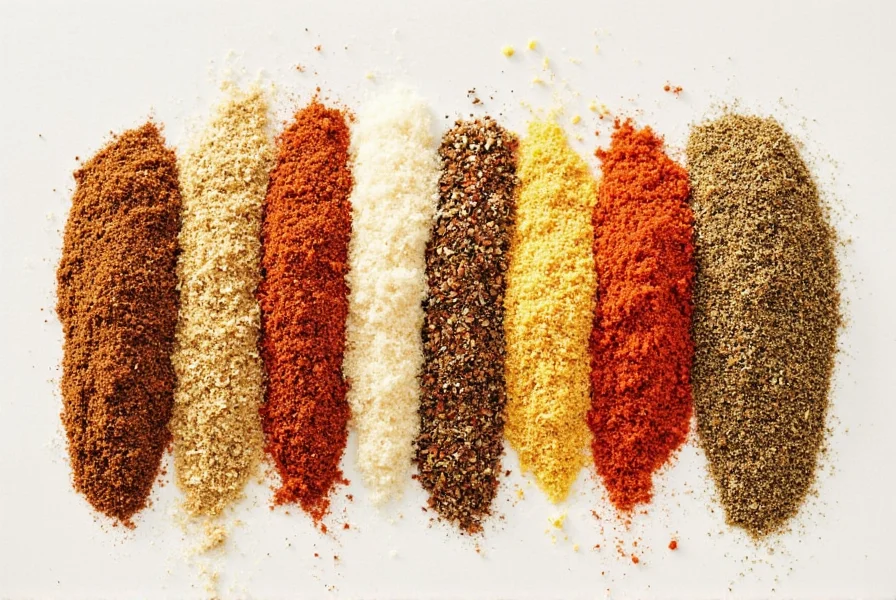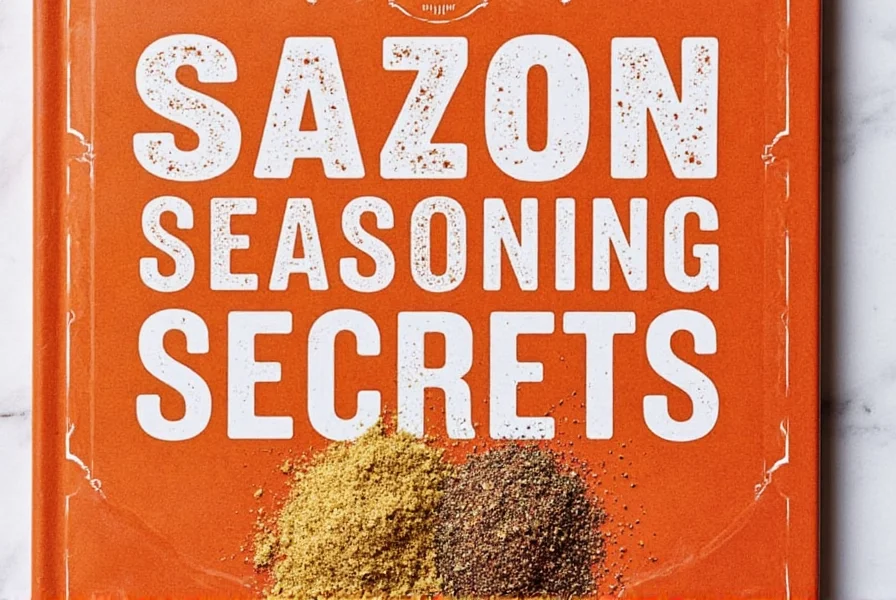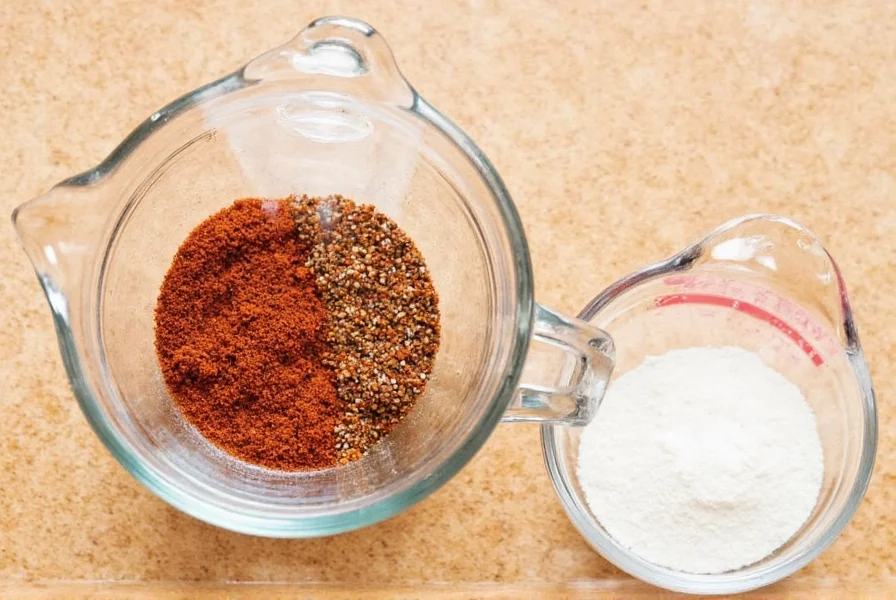Sazon seasoning is a traditional Latin American spice blend used to enhance flavor and color in dishes like rice, beans, meats, and vegetables. It typically contains annatto, cumin, coriander, garlic powder, and other spices, providing a warm, earthy taste with a distinctive orange hue.
This comprehensive guide covers everything you need to know about sazon seasoning, including its ingredients, uses, comparisons with similar seasonings, buying tips, and answers to common questions. Whether you're new to Latin cooking or looking to refine your skills, this article will help you master sazon for authentic results.
Table of Contents
- What Is Sazon Seasoning?
- Why Use Sazon Seasoning?
- How to Use Sazon Seasoning
- Sazon vs. Other Seasonings: Key Differences
- How to Choose the Best Sazon Seasoning
- Frequently Asked Questions
- Final Tips for Perfect Sazon Use
What Is Sazon Seasoning?

Sazon is a staple in many Latin kitchens, known for its earthy aroma and deep umami flavor. The name comes from the Spanish word "sazón," meaning season or seasoning. It's more than just salt and pepper — it's a carefully balanced mix of spices designed to enhance natural flavors and bring warmth to any dish.
Typical Ingredients in Sazon
| Ingredient | Purpose |
|---|---|
| Annatto (Achiote) | Gives sazón its signature golden-orange hue and mild peppery flavor |
| Cumin | Adds earthiness and depth |
| Coriander | Provides citrusy, floral notes |
| Garlic Powder | Boosts savory base flavor |
| Onion Powder | Enhances sweetness and richness |
| Oregano | Offers herbal complexity |
| Chili Powder (optional) | Adds heat |
Why Use Sazon Seasoning?
Here's why every home cook should have a bottle of seasoning sazon on hand:
- Brings bold, complex flavor without overpowering ingredients
- Instantly elevates simple dishes like rice, beans, chicken, and fish
- Perfect for meal prep — one sprinkle and you're done
- Great for beginners who want restaurant-quality results fast
How to Use Sazon Seasoning

Using sazón is easy, but using it well takes a bit of finesse. Here are seven smart ways to make the most of this powerhouse seasoning:
- Rice Revival: Add a pinch to white or brown rice for an instant Latin twist.
- Protein Power-Up: Rub onto chicken thighs or shrimp before grilling or pan-searing.
- Bean Boost: Sprinkle into black bean soup or refried beans for extra oomph.
- Marinade Magic: Mix with olive oil and lime juice for a zesty marinade for beef or pork.
- Fish Fix: Lightly dust tilapia or cod fillets before baking or frying.
- Veggie Upgrade: Toss roasted carrots, cauliflower, or sweet potatoes with sazón for smoky depth.
- Stew & Soup Secret: Stir into stews, soups, or salsas for a rich, layered taste.
Sazon vs. Other Seasonings: Key Differences

You might wonder how sazón stacks up against other popular seasonings like adobo, taco seasoning, or curry powder. Let's break it down:
| Seasoning | Main Flavors | Best For | Similarity to Sazon |
|---|---|---|---|
| Sazon | Earthy, warm, aromatic | Rice, seafood, grilled meats | Unique blend; not quite like anything else |
| Adobo | Garlic, oregano, tangy vinegar notes | Slow-cooked meats, stews | Shares garlic and oregano, but saltier and tangier |
| Taco Seasoning | Smoky, chili-forward | Ground beef, tacos, fajitas | More heat-focused, less aromatic |
| Curry Powder | Floral, spicy, slightly sweet | Indian and Thai dishes | Uses some similar spices like turmeric and cumin |
How to Choose the Best Sazon Seasoning

When shopping for sazón, you'll find a few key brands and varieties. Here's a breakdown of top picks to help you choose the best option for your kitchen:
- Goya Sazón
– Features: Most iconic and widely available brand
– Pros: Authentic flavor, affordable, contains annatto
– Cons: Can be slightly salty if not used sparingly
– Best For: Traditional Latin dishes, especially rice and beans - McCormick Sazon Gourmet Seasoning
– Features: No MSG version, pre-mixed with herbs
– Pros: Balanced flavor, great for newcomers
– Cons: Slightly milder than traditional blends
– Best For: Everyday cooking, family meals - Badia Sazón
– Features: Offers both with and without culantro versions
– Pros: Bold flavor, includes real annatto color
– Cons: Culantro can be too strong for some palates
– Best For: Authentic Puerto Rican and Dominican recipes - Trader Joe's Sazón
– Features: Compact packaging, organic options available
– Pros: Fresh tasting, reasonably priced
– Cons: Not as readily available outside TJ stores
– Best For: small batches and experimenting
Frequently Asked Questions

Q: What is sazon seasoning?
A: Sazon seasoning is a traditional Latin American spice blend used to enhance flavor and color in dishes. It typically includes annatto, cumin, coriander, garlic powder, onion powder, and other spices, giving a warm, earthy taste with a vibrant orange hue.
Q: How do I use sazon seasoning?
A: Sazon works best as a rub for proteins, a flavor booster for rice and beans, or a seasoning for soups and stews. Start with 1/4 to 1/2 teaspoon per serving and adjust to taste. It pairs perfectly with chicken, fish, and roasted vegetables.
Q: Is sazón the same as adobo?
No! While both are Latin seasonings, adobo is heavier on garlic and often includes vinegar or citrus, giving it a sharper flavor. Sazón leans toward warm, earthy tones with its distinctive annatto coloring.
Q: Can I substitute sazón in recipes?
Yes, though you won't get the exact same flavor. For a basic substitute, try mixing equal parts ground cumin, coriander, onion powder, and a dash of paprika or turmeric for color. For best results, add a pinch of annatto if available.
Q: Does sazón contain salt?
Most store-bought versions do include salt. If you're watching sodium, look for "no salt added" varieties or make your own blend. Always check the label as salt content varies by brand.
Q: How much sazon should I use per dish?
Start with 1/4 to 1/2 teaspoon per serving. Sazon is potent! It's better to start light and add more after cooking if needed. Remember that store-bought versions often contain salt, so adjust your additional salt accordingly.
Q: Can I make my own sazón at home?
Absolutely! DIY sazón lets you adjust the strength and tailor it to your tastes. Here's a quick recipe:
- 1 tbsp annatto seeds (ground fine)
- 1 tsp ground cumin
- 1 tsp coriander
- ½ tsp garlic powder
- ½ tsp onion powder
- ¼ tsp dried oregano (optional)
- Mix well and store in an airtight container.
Q: Which Latin American dishes traditionally feature sazon?
Sazon is essential in Puerto Rican, Dominican, and other Caribbean cuisines. It's traditionally used in arroz con pollo, mofongo, tostones, pasteles, and many rice and bean dishes. In Mexico, annatto-based achiote paste serves a similar purpose in dishes like cochinita pibil.
Q: How should I store sazon to maintain its freshness?
Store sazon in an airtight container away from heat and light. Properly stored, it will maintain peak flavor for 6-12 months. The oils in the spices will gradually dissipate over time, so for best results use within 6 months of purchase.
Final Tips for Perfect Sazon Use

Sazon seasoning is more than just a spice blend — it's a cultural staple and culinary game-changer. With its bold flavor and versatility, it deserves a permanent spot in your pantry.
Whether you're roasting vegetables, seasoning grilled fish, or spicing up your morning eggs, a little sazón goes a long way. And now that you know how to use it, your meals will never be the same again!
So next time you reach for salt and pepper, don't forget the seasoning sazon — your secret weapon for flavor-packed dishes every single time.











 浙公网安备
33010002000092号
浙公网安备
33010002000092号 浙B2-20120091-4
浙B2-20120091-4